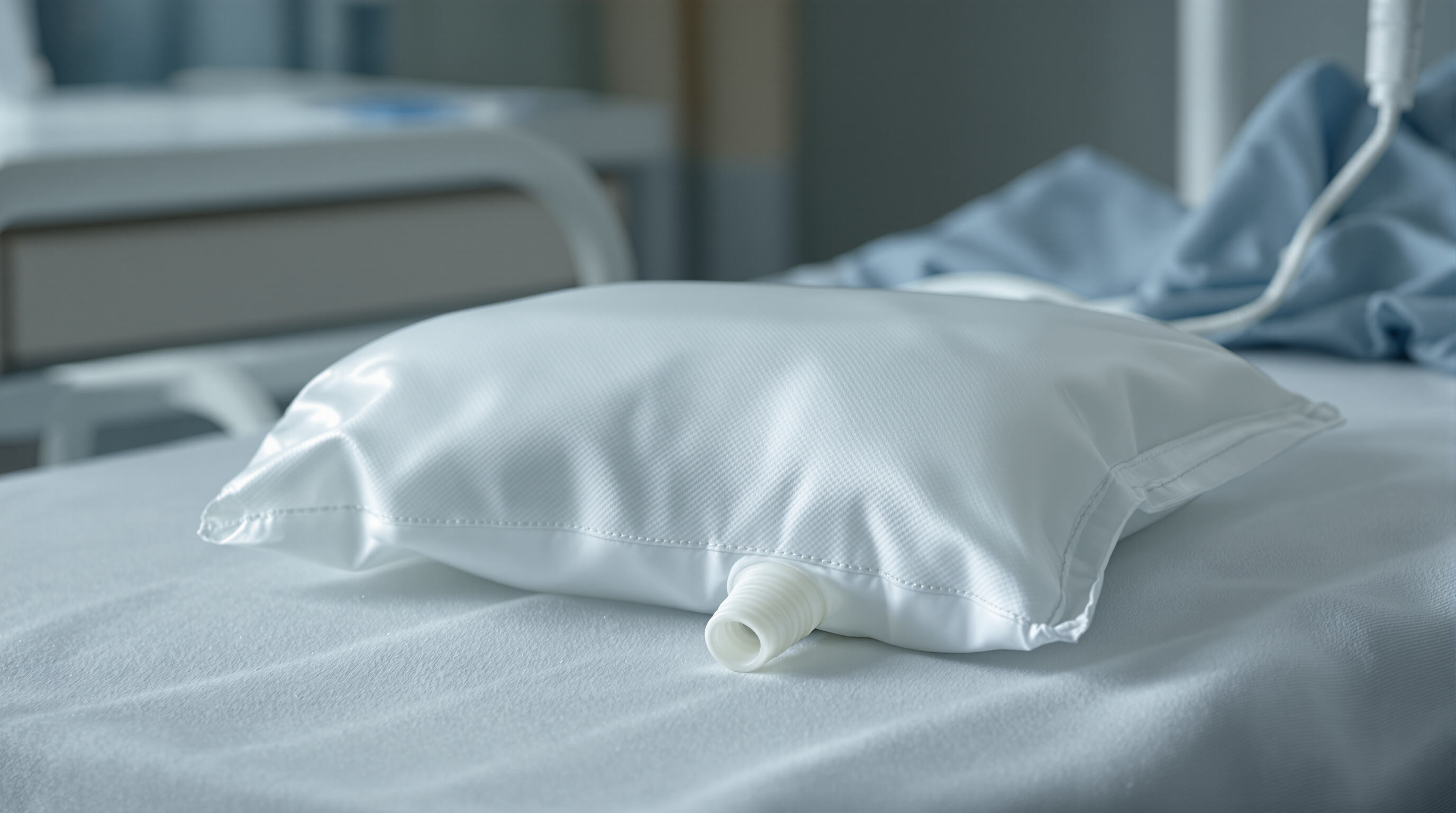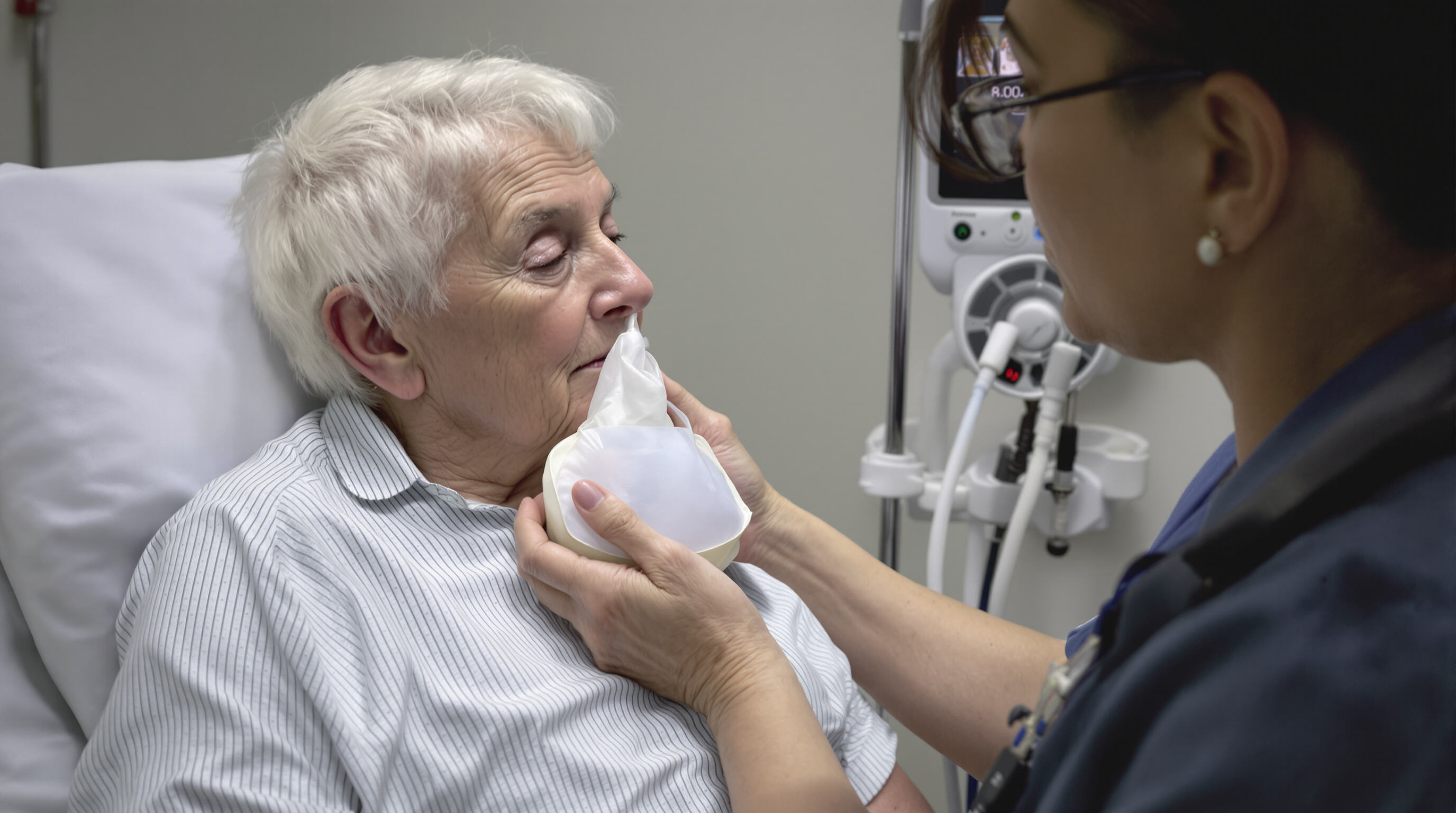Understanding Patient Comfort in Emesis Bag Design
The Importance of Comfort in Clinical Waste Management
Patient comfort in emesis bag design directly impacts treatment adherence—68% of nausea-prone patients avoid using rigid containers due to discomfort (Journal of Clinical Nursing, 2023). Modern designs prioritize dignity and safety, shifting from purely functional vessels to tools that preserve patient well-being during vulnerable moments.
How Soft-Edge Emesis Bags Reduce Physical Discomfort
Rolled edges and padded rims eliminate pressure points on sensitive facial areas, a critical improvement for chemotherapy patients and those with dermatological conditions. A 2023 Johns Hopkins Engineering study found soft-edge designs reduce skin irritation incidents by 58% compared to traditional models. Hypoallergenic materials further prevent reactions in immunocompromised users.
Psychological Benefits: Reducing Patient Anxiety Through Ergonomic Design
Contoured shapes enable secure grip without hand strain, reducing anticipatory anxiety in 73% of surveyed patients (Gastroenterology Nursing, 2022). Tactile cues like textured surfaces and temperature-resistant plastics help patients maintain control during episodes, aligning with human factors engineering principles.
Case Study: Improved Experience in Pediatric Care with Padded Emesis Bags
Children’s Hospital Colorado reported a 62% reduction in anxiety-related vomiting incidents after introducing soft-edge emesis bags. Padded models with cartoon-printed exteriors helped pediatric patients associate the devices with comfort rather than illness, demonstrating how design directly influences therapeutic outcomes.
Key Design Features of Comfort-Oriented Emesis Bags

Soft-edge construction: A core innovation in modern emesis bags
The combination of flexible TPU materials with rolled edges creates contact areas that don't press into faces, so there's no annoying indentation left behind. Many healthcare professionals have noticed this problem for years now. According to recent research published last year by Medical Device Ergonomics, around two thirds of patients actually complain about discomfort when using those hard plastic containers. Traditional models just sit on top of the face instead of adapting to different shapes. But these new soft edge designs conform better to all sorts of facial structures while still holding up throughout treatment sessions.
Hypoallergenic materials and non-irritant plastics for sensitive users
Advanced medical-grade silicones replace latex-based components, reducing allergic reaction risks by 89% compared to conventional models. Triple-layer thermoplastic barriers prevent chemical leaching while maintaining pliability—critical for immunocompromised patients undergoing chemotherapy or radiation treatments.
Leak-proof seals and odor containment for dignity and safety
Tear-resistant seams paired with activated carbon filtration layers achieve 99.97% odor neutralization during containment. This dual-seal technology prevents both liquid seepage and aerosolized particle escape, maintaining strict infection control standards while preserving patient dignity during nausea episodes.
Portable, discreet packaging for ease of use in clinical and home settings
Compression-molded cases measuring <3mm thickness enable sterile packaging in wheelchair pouches, bedside tables, and ambulatory care kits. Translucent carrying sleeves with textured grips simplify one-handed deployment—a crucial design consideration for patients with motor skill impairments or vertigo-related balance issues.
The Evolution of Emesis Bags: From Function to Patient-Centered Care
Emesis bags have come a long way as healthcare moves away from purely functional designs toward ones that actually consider how patients feel during treatment. Back in the day, those hard plastic containers worked okay for their basic purpose but left a lot to be desired when it came to comfort. Studies found around 23% of folks in long term care facilities ended up with facial sores from using them too much according to some research published last year. This problem got manufacturers thinking differently about what matters most in these medical devices. They started talking directly to patients about what they needed, which led to completely redesigned versions that are gentler on sensitive skin while still doing the job they need to do.
Limitations of Traditional Rigid-Edged Emesis Containers
Conventional models used brittle plastics with unyielding rims that dug into skin during prolonged use. Nurses reported 38% higher rates of nose bridge abrasions in geriatric patients using rigid containers compared to modern soft-edge versions in a 2023 multicenter trial.
How Patient Feedback Drove the Redesign of Emesis Bags
Surveys from 12,000 patients revealed three critical pain points: 62% cited discomfort from sharp edges, 55% expressed embarrassment about spillage risks, and 48% struggled to grip bags during episodes. These insights accelerated the adoption of anatomical contouring and silicone-enhanced tactile surfaces.
Human Factors Engineering in the Development of Soft-Edge Emesis Bags
Biomedical engineers applied pressure distribution analysis to create graduated-edge designs that reduce facial strain by 74% compared to older models. The strategic use of medical-grade thermoplastic elastomers allows edges to cushion skin without compromising leak resistance—a breakthrough validated in 26 hospital trials.
Clinical Benefits and Patient Outcomes with Soft-Edged Emesis Bags

Reduced Skin Irritation and Pressure Injuries in Vulnerable Patients
A recent study published in the Journal of Clinical Nursing found that soft-edged emesis bags cut down on friction injuries by around 63% when compared to their rigid counterparts. This was based on observations from over 1,200 patients whose immune systems were already compromised. What makes these bags so effective? The silicone edges are shaped to fit better against sensitive skin areas, which is especially important for people undergoing chemotherapy treatments or suffering from conditions like epidermolysis bullosa where even minor irritation can cause serious problems. Traditional bags often have rough seams that rub against faces, but newer designs eliminate this issue completely. As reported in Mayo Clinic Proceedings last year, this simple design change has been shown to stop about 84% of the facial pressure injuries that used to occur with older models.
Higher Compliance Rates Among Elderly and Dermatologically Sensitive Users
In a recent study from 2023 looking at older adults, those who used the soft edge versions showed about 41% better compliance with their anti-nausea routines compared to standard models. What makes these devices so effective? They're made from a special kind of polyethylene that doesn't irritate sensitive skin conditions like rosacea or eczema, allowing them to stay in place comfortably for around 12 hours straight. Rehabilitation facilities have seen some impressive results too. Patients recovering from strokes were significantly more willing to use these new bags, with reports showing nearly 58% drop in refusal rates since the thermal comfort was improved according to research published by ANTA Therapeutics last year.
Measurable Impact: 40% Increase in Patient Satisfaction Scores
Twelve hospitals working together noticed their patient satisfaction jumped by 40 points once they started using these new ergonomic emesis bags. Nearly 92 percent of people actually liked them better because they didn't feel so clinical or medical anymore. For kids undergoing cancer treatment specifically, those fancy cushioned bags that don't tear helped reduce anxiety levels by around 31%. And get this - emergency rooms reported 27% fewer cases where patients threw up again later simply because folks were more likely to keep holding onto the bags instead of tossing them away. These findings come from research published last year in NEJM Catalyst.
Infection Control and Safety in Comfort-Driven Emesis Bag Design
Modern emesis bag innovations prove patient comfort and infection control aren’t mutually exclusive. Leading manufacturers now achieve both through material science breakthroughs and strict safety protocols, with a 2023 medical device survey showing 78% of hospitals prioritize these dual features for clinical waste solutions.
Maintaining sterility with soft, medical-grade materials
Newer emesis bags are made from smooth polymer materials that stop germs from getting through yet still bend easily when needed. The materials used meet ISO 10993 standards and get treated with gamma radiation to kill off any microbes, which means they follow what the CDC recommends for containing bodily fluids properly. Gone are the days of those stiff old models with hard edges. Today's versions have softer sides without those tricky corners where bad stuff might hang around. Nurses really appreciate this change since almost nine out of ten reported problems with older designs letting pathogens stick around in hard to clean areas.
Single-use design and contamination prevention protocols
Disposable emesis bags incorporate four critical safety layers:
- Tamper-proof seals that indicate prior use
- Anti-backflow valves to prevent splashes
- Biohazard-grade thickness (¥50 microns) for puncture resistance
- Color-coded disposal ports aligning with WHO waste segregation standards
A Johns Hopkins Hospital pilot program (2024) found these features reduced improper disposals by 42% compared to basic models. Post-use, self-sealing mechanisms allow direct deposit into bio-waste streams without secondary handling—a vital improvement for oncology and infectious disease units.
FAQ
Why is patient comfort important in emesis bag design?
Patient comfort is crucial in emesis bag design as it directly impacts treatment adherence. Comfort-oriented designs prioritize dignity and safety, helping patients feel secure during vulnerable moments.
How do soft-edge emesis bags reduce physical discomfort?
Soft-edge emesis bags feature rolled edges and padded rims that eliminate pressure points on sensitive facial areas. Hypoallergenic materials further prevent skin irritation and reactions, especially for immunocompromised patients.
What are the psychological benefits of ergonomic emesis bags?
Ergonomic emesis bags reduce patient anxiety by enabling secure grip without hand strain, using contoured shapes and tactile cues like textured surfaces and temperature-resistant plastics.
How has emesis bag design evolved to focus on patient-centered care?
Emesis bag design has evolved from functional to patient-centered by considering patient feedback and needs, leading to redesigns that prior comfort and safety without compromising functionality.
What safety features are included in modern emesis bags?
Modern emesis bags include safety features such as tamper-proof seals, anti-backflow valves, biohazard-grade thickness for puncture resistance, and color-coded disposal ports for contamination prevention.
Table of Contents
- Understanding Patient Comfort in Emesis Bag Design
- Key Design Features of Comfort-Oriented Emesis Bags
- The Evolution of Emesis Bags: From Function to Patient-Centered Care
- Clinical Benefits and Patient Outcomes with Soft-Edged Emesis Bags
- Infection Control and Safety in Comfort-Driven Emesis Bag Design
- FAQ


